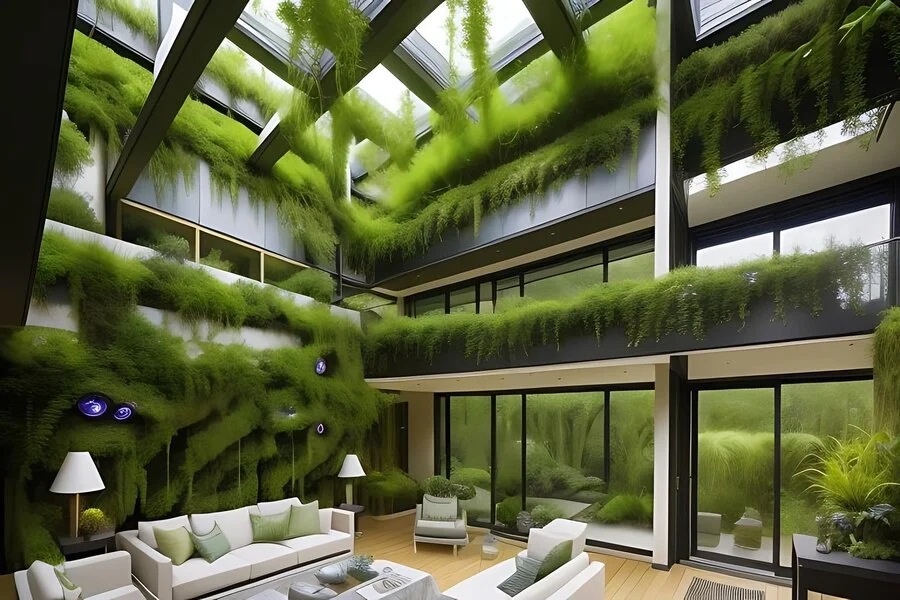Introduction to Eco-Friendly Home Design
Eco-friendly home design is quickly becoming more than just a trend; it’s a commitment to a sustainable future. As the world grapples with climate change, cities across Asia are increasingly turning to minimalist and green architecture. The goal? Reduce environmental impact, maximize energy efficiency, and create spaces that bring comfort and tranquility to residents.
Why Eco-Friendly Architecture is Trending in Asia
Asia’s fast-paced urbanization has raised concerns about sustainability. With rising populations and limited resources, eco-friendly homes offer a practical and thoughtful solution. For many, it’s also about reconnecting with nature and aligning with cultural beliefs in harmony and simplicity. The demand for sustainable spaces is also driven by government regulations and incentives encouraging greener building practices across the region.
Minimalist Home Design Principles in Asian Architecture
Minimalism in Asia is about embracing simplicity without sacrificing function or beauty. In minimalist design, every piece serves a purpose, and clutter is kept to a minimum. The goal is to create spaces that feel open, organized, and peaceful. Common features include clean lines, neutral color schemes, and an emphasis on natural light. By focusing on “less is more,” minimalist design reduces material waste and energy use, making it inherently eco-friendly.
Key Elements of Green Architecture
Eco-friendly homes in Asia focus on elements that lower environmental impact. Here are some core features:
Sustainable Materials
Bamboo, recycled wood, and reclaimed metal are often used in construction.
Energy Efficiency
Homes are designed to use less energy with smart appliances, LED lighting, and solar panels.
Natural Ventilation
Large windows and open spaces allow for natural airflow, reducing reliance on air conditioning.
Water Conservation
Rainwater harvesting systems and low-flow fixtures help conserve water, which is vital in densely populated areas.
Green Spaces
Rooftop gardens and vertical landscaping bring nature into urban spaces, improving air quality and reducing heat.
Popular Eco-Friendly Building Materials in Asia
Asia has long utilized local, sustainable materials in construction, with bamboo standing out as a prime example. Bamboo grows rapidly and is both durable and versatile, making it perfect for everything from flooring to entire house frames. Other popular materials include reclaimed wood, which gives homes a rustic yet modern feel, and natural stones sourced locally to reduce transportation emissions.
How Cultural Influences Shape Green Design in Asia
Asian cultures often integrate spirituality and balance with nature, which influences eco-friendly design choices. In China, Feng Shui encourages a harmonious layout that maximizes positive energy flow. In Japan, Wabi-Sabi celebrates imperfections, valuing natural materials like wood and stone. These philosophies align with green design by emphasizing the importance of natural materials and a connection to the environment.
Benefits of Eco-Friendly and Minimalist Architecture
Eco-friendly, minimalist homes offer several benefits:
Environmental Impact Reduction
Green architecture reduces carbon emissions, cuts down on waste, and conserves resources.
Lower Utility Bills
Energy-efficient designs mean homeowners save on electricity and water bills.
Improved Wellbeing
Minimalist homes can reduce stress by creating a more organized and calming environment.
Future-Proof Investment
With the rise of green standards, eco-friendly homes tend to have a higher resale value.
By focusing on sustainability, homeowners also contribute positively to the broader community, helping cities achieve their environmental goals.
Case Studies of Eco-Friendly Homes in Asia
Across Asia, examples of successful green architecture projects showcase the potential of eco-friendly designs:
Japan’s Passive Houses
Designed to maintain a stable internal climate without excessive heating or cooling, these homes feature heavy insulation, airtight structures, and solar panels.
Singapore’s Green Roofs
Many buildings incorporate lush rooftop gardens that reduce heat and improve air quality in the city’s dense urban landscape.
Thailand’s Bamboo Houses
In rural areas, bamboo homes use natural materials for construction, providing a comfortable and cost-effective solution that blends with the landscape.
Challenges in Adopting Eco-Friendly Designs in Asia
Despite the benefits, green architecture faces some obstacles. For one, the cost of eco-friendly materials and systems can be high. While bamboo and reclaimed wood are affordable, imported sustainable materials or high-tech energy systems might be more costly. Additionally, some cities lack the infrastructure or regulatory support to facilitate green architecture projects, slowing down adoption.
Another challenge is climate variation. Asia’s diverse climates mean that eco-friendly designs must be adapted to local weather, whether that’s the extreme cold of northern China or the humidity of Southeast Asia.
Future Trends in Eco-Friendly Architecture in Asia
Looking ahead, eco-friendly architecture in Asia is set to grow even more innovative. As smart technology advances, energy management systems and AI-driven climate control will make homes even more efficient. Additionally, government policies are becoming stricter on emissions, which will likely drive up demand for green homes. Public interest in sustainable and healthy living spaces is also likely to keep growing, encouraging architects to push the boundaries of what eco-friendly design can achieve.
Conclusion: Embracing a Sustainable Future in Asian Architecture
Eco-friendly, minimalist home design is transforming urban and rural landscapes across Asia. By reducing waste, conserving resources, and fostering connection to nature, these homes represent more than a trend—they’re a lifestyle choice that benefits both people and the planet. With continued support from both residents and governments, green architecture will help pave the way for a sustainable, balanced future in Asia.


